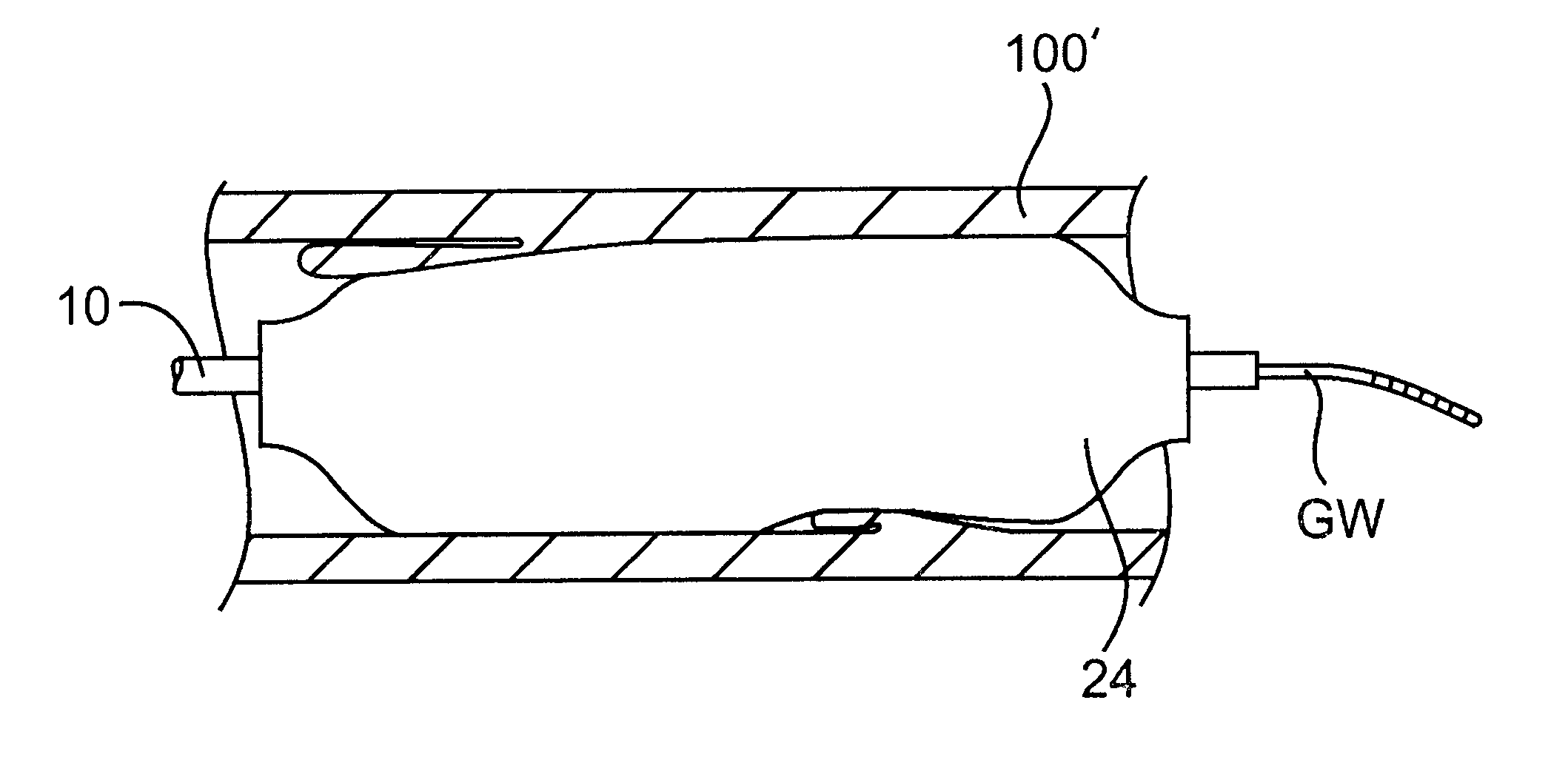Cryotherapy methods for treating vessel dissections and side branch occlusion
a cryotherapy and side branch technology, applied in the field of medical methods and kits, can solve the problems of limiting blood flow, threatening acute vessel closure, and undesirable dissections
- Summary
- Abstract
- Description
- Claims
- Application Information
AI Technical Summary
Benefits of technology
Problems solved by technology
Method used
Image
Examples
experimental ii
Coronary CryoPlasty Clinical Experience
Purpose
Five patients with coronary artery disease were treated with the CVSi CryoPlasty System to evaluate the safety and effectiveness of the CVSi System in the treatment of de novo and in-stent restenotic lesions. Patients were assessed for acute outcomes and in-hospital adverse events.
Patient Selection
Patients with either a de novo or in-stent restenosis lesion in a coronary artery that was amenable to percutaneous treatment were identified by experienced intervention-alists. Lesion inclusion criteria was very broad and included very complex lesions, such as, lesion lengths ranging from 10 mm to 25 mm, stenoses from 90% to total occlusions, and calcified, fibrotic, and soft plaque. Other contributing factors were severe access angulations, high cholesterol, diabetes, and smoking.
Methods
After diagnostic angiography of the target vessel confirmed the presence of a lesion suitable for endovascular therapy, each patient received the following tr...
PUM
 Login to View More
Login to View More Abstract
Description
Claims
Application Information
 Login to View More
Login to View More - R&D
- Intellectual Property
- Life Sciences
- Materials
- Tech Scout
- Unparalleled Data Quality
- Higher Quality Content
- 60% Fewer Hallucinations
Browse by: Latest US Patents, China's latest patents, Technical Efficacy Thesaurus, Application Domain, Technology Topic, Popular Technical Reports.
© 2025 PatSnap. All rights reserved.Legal|Privacy policy|Modern Slavery Act Transparency Statement|Sitemap|About US| Contact US: help@patsnap.com



